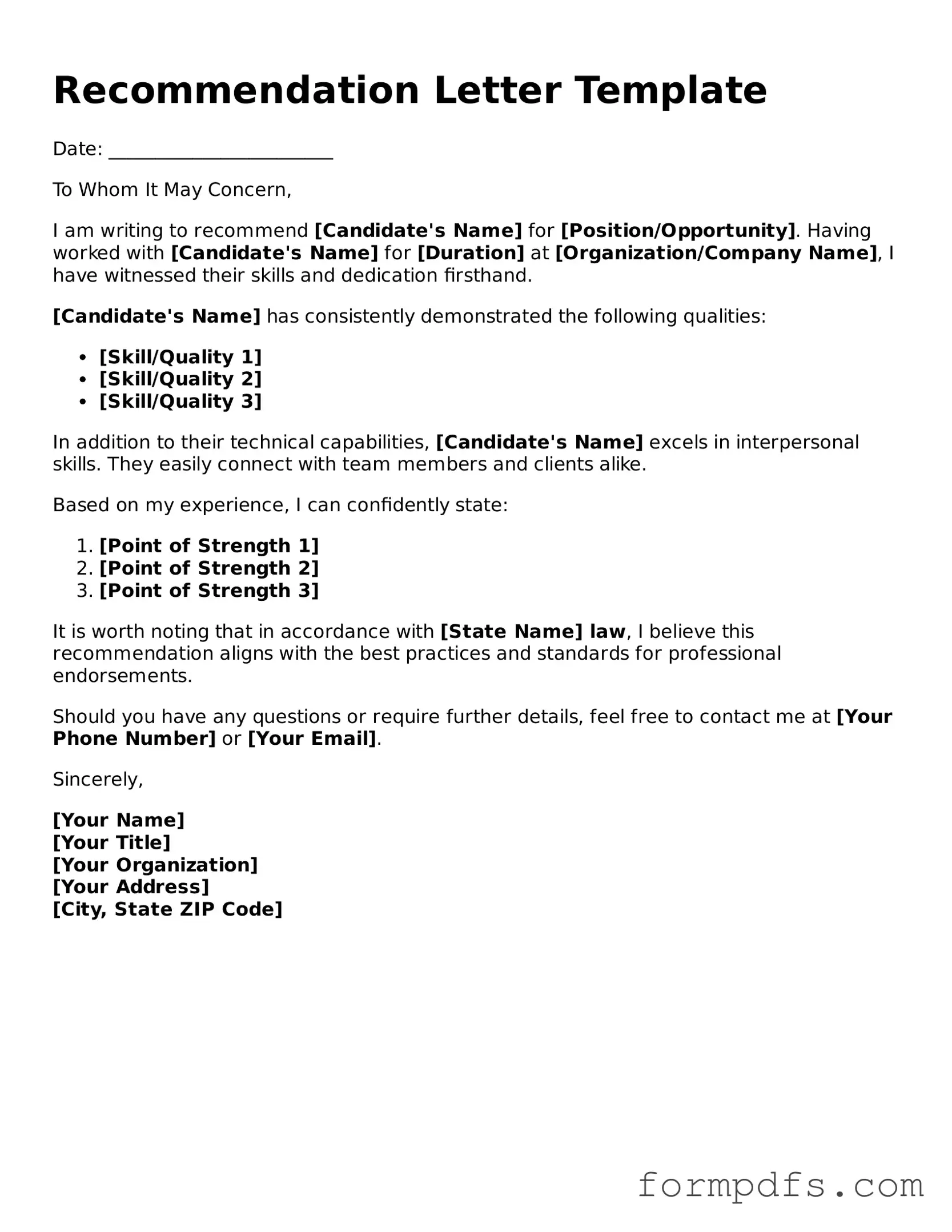What is a Recommendation Letter form?
A Recommendation Letter form is a document that allows individuals, such as professors, employers, or mentors, to provide a formal endorsement of a candidate's qualifications, skills, and character. It is often required for applications to educational programs, job positions, or other opportunities where a personal reference is beneficial.
Who should I ask to write my recommendation letter?
It's best to choose someone who knows you well and can speak positively about your abilities and character. Ideal candidates include professors, employers, or supervisors who have directly observed your work or academic performance. Ensure that the person you ask is familiar with your achievements and can provide specific examples to support their endorsement.
How do I request a recommendation letter?
When requesting a recommendation letter, approach the individual politely and provide them with ample notice. A face-to-face conversation or a well-crafted email works best. Clearly explain why you need the letter, the deadline for submission, and any specific points you would like them to address. Offering to provide your resume or a list of accomplishments can also be helpful.
What information should be included in a recommendation letter?
A strong recommendation letter typically includes the writer's relationship to the candidate, specific examples of the candidate's skills and accomplishments, and a clear endorsement of their qualifications for the opportunity they are pursuing. Personal anecdotes can make the letter more compelling and relatable.
How long should a recommendation letter be?
Generally, a recommendation letter should be one to two pages long. This length allows the writer to provide enough detail about the candidate's qualifications without overwhelming the reader. Conciseness is key; the focus should be on the most relevant and impactful information.
Can I see my recommendation letter before it is submitted?
Many recommenders prefer to keep their letters confidential to maintain their integrity. However, you can ask if they would be willing to share a draft with you. Respect their decision if they choose not to do so. It's important to trust their judgment and the value they will add to your application.
What should I do if my recommender misses the deadline?
If your recommender misses the deadline, reach out to them politely to inquire about the status of the letter. It’s possible they simply forgot or encountered unexpected issues. If necessary, consider asking another individual to write a letter for you, especially if time is running out. Communication is key in these situations.
Can I use the same recommendation letter for different applications?
While you can use the same letter for multiple applications, it's advisable to tailor it to each specific opportunity if possible. Different programs or jobs may value different skills or experiences. A customized letter that addresses the specific requirements of each application can significantly enhance your chances of success.
